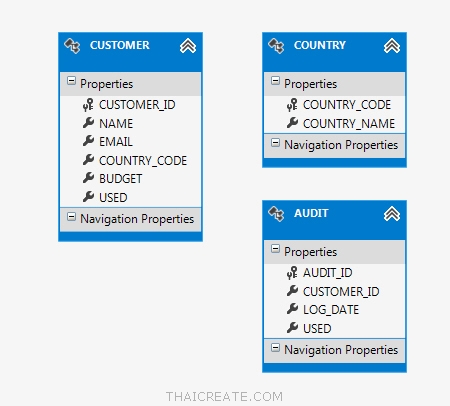
- #Entity framework ef not in command line movie#
- #Entity framework ef not in command line install#
- #Entity framework ef not in command line update#
- #Entity framework ef not in command line full#
The tools are configured to search the assembly containing theĭbContext (or the one designated as the startup assembly) for a type that This interface is only intended for use with design time tools such as This (and other) problems associated with configuring DbContext objectsĭifferently for certain design-time tasks, such as migrations. The IDesignTimeDbContextFactory was introduced in EF Core 2.0 to alleviate Using to version 2.0 of EF Core, your options were limited to changing the command timeout for the DbContext, running the migration and then resetting the timeout value (or not): public SampleContext()ĭatabase.SetCommandTimeout(( int )TimeSpan.FromMinutes(5).TotalSeconds)
#Entity framework ef not in command line full#
This gives you full control over what context object dotnet ef uses when it creates migrations. The simplest solution is to implement IDesignTimeDbContextFactory. After that, it starts to get more and more complicated. If that doesn’t exist, it will look for an implementation of IDesignTimeDbContextFactory. When you use dotnet ef to create the migration, it will look for a parameterless DbContext class. This will make more sense when you do the steps below. First you create a database “migration”, and then you apply it. Now that you have the DbContext, a model, and a way to get the connection string, you can use dotnet ef to actually create the database. Note: If the connection string is not overridden in secrets.json, it’ll pull the connection string from appsettings.json instead. It should output the connection string from the user secrets file: Server=SQL_SERVER_INSTANCE_NAME Database=StreamingService Integrated Security=true Code language: plaintext ( plaintext ) Var connectionString = config.GetConnectionString( "Default")

Now use ConfigurationBuilder to fetch the connection string: using Your csproj file should now have the user secrets info in it: Exe netcoreapp3.1 ef_core_cli 9bc52419-f971-411a-91e7-47ecdfb428da all runtime build native contentfiles analyzers buildtransitive PreserveNewest Code language: HTML, XML ( xml ) Fetch the connection string with ConfigurationBuilder public int Id Ĭode language: JSON / JSON with Comments ( json )
#Entity framework ef not in command line movie#
There are more data annotations available, but I’ll just explain that three that are being used on the Movie model: Annotation The Movie model is using data annotation attributes to specify how the table should be created. using Ĭode language: C# ( cs ) Data annotations This will be used to create the Movies table. When you use EF Core to create the database, it will use the model classes to create the tables. You can use data annotation attributes to define how each column should be created.
#Entity framework ef not in command line install#
Install the tool by executing the following on the command line: dotnet tool install -global dotnet -ef Code language: PowerShell ( powershell ) Add a modelĪ model is a class that represents a table in the database.
#Entity framework ef not in command line update#
The dotnet ef tool is used to install and update the database. This will add the package references to your csproj file, like this: Exe netcoreapp3.1 ef_core_cli all runtime build native contentfiles analyzers buildtransitive Code language: HTML, XML ( xml ) Install the dotnet ef tool Note: If you’re not using SQL Server, you’ll need to get the appropriate nuget package for your database provider. The first step is to install the EF Core nuget packages.Įxecuting the following in Package Manager Console (View > Other Windows > Package Manager Console). Option 2 – Apply migration from the codeĪdd the EF Core nuget packages and tools Install the EF Core nuget packages.Option 1 – Apply migration using dotnet ef.




 0 kommentar(er)
0 kommentar(er)
